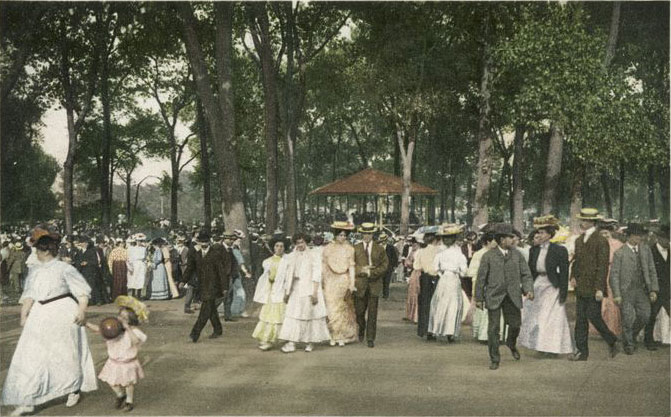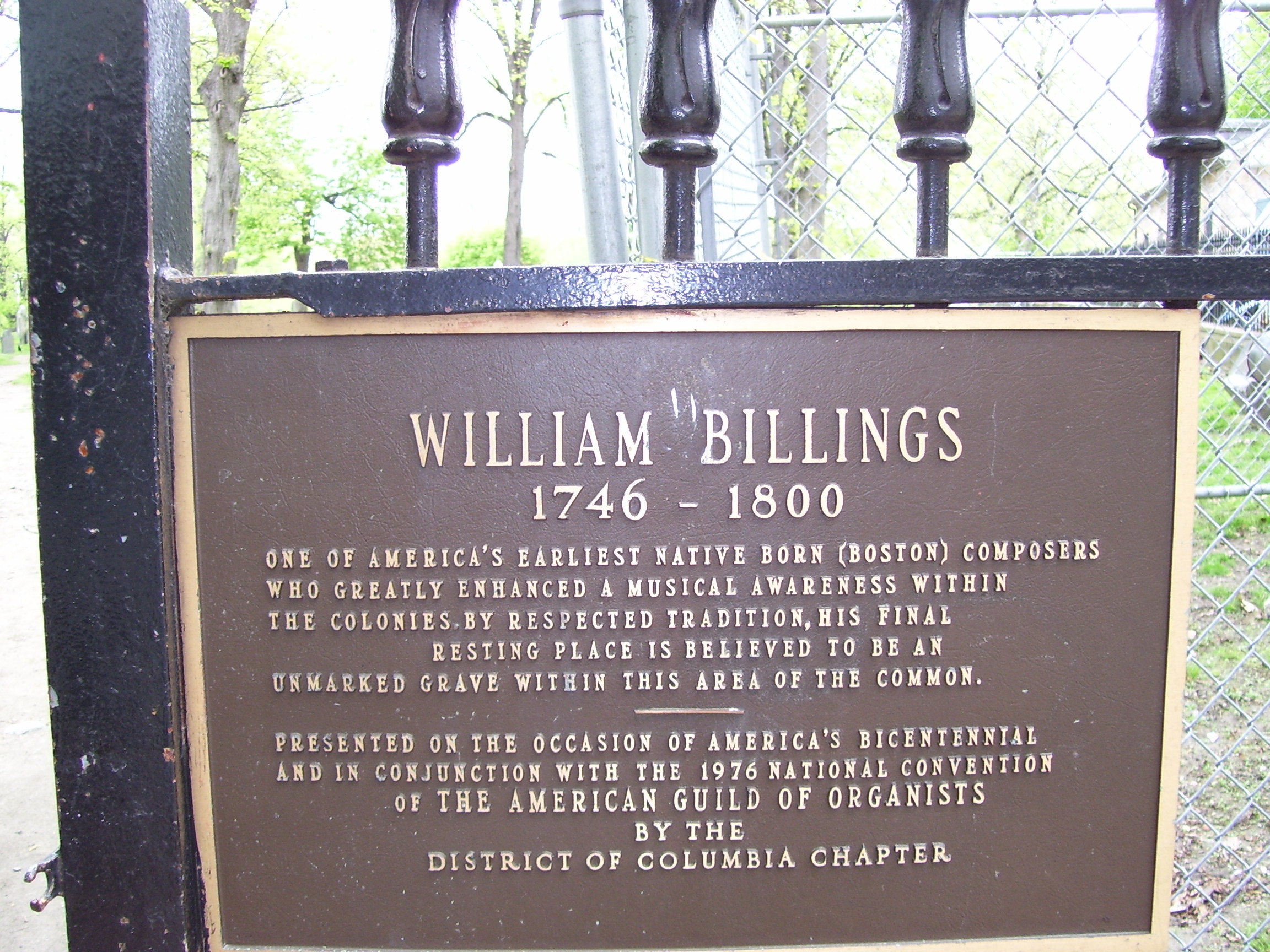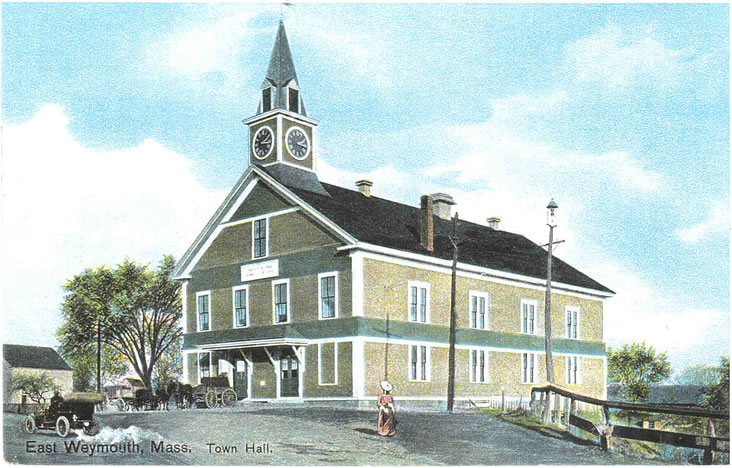|
Boston Common
The Boston Common is a public park in downtown Boston, Massachusetts. It is the oldest city park in the United States. Boston Common consists of of land bounded by five major Boston streets: Tremont Street, Park Street, Beacon Street, Charles Street, and Boylston Street. The Common is part of the Emerald Necklace of parks and parkways that extend from the Common south to Franklin Park in Jamaica Plain, Roxbury, and Dorchester. The visitors' center for the city of Boston is located on the Tremont Street side of the park. The Central Burying Ground is on the Boylston Street side of Boston Common and contains the graves of artist Gilbert Stuart and composer William Billings. Also buried there are Samuel Sprague and his son Charles Sprague, one of America's earliest poets. Samuel Sprague was a participant in the Boston Tea Party and fought in the Revolutionary War. The Common was designated as a Boston Landmark by the Boston Landmarks Commission in 1977. The Common is ... [...More Info...] [...Related Items...] OR: [Wikipedia] [Google] [Baidu] |
Central Burying Ground, Boston
The Central Burying Ground is a cemetery in Boston, Massachusetts, United States. It was established on Boston Common in 1756. It is located on Boylston Street between Tremont Street and Charles Street. Famous burials there include the artist Gilbert Stuart, painter of the famed portraits of George Washington and Martha Washington, and the composer William Billings, who wrote the famous colonial hymn "Chester." Also buried there are Samuel Sprague and his son, Charles Sprague, one of America's earliest poets. Samuel Sprague was a participant in the Boston Tea Party and fought in the American Revolutionary War. When the Tremont Street subway was under construction in the 1890s, burials were discovered in the area abutting the cemetery. These were reinterred in a mass grave within the bounds of the burying ground. Notable burials * "British soldiers who died of disease during the occupation of the city 775–1776 and those who died of wounds received at Bunker Hill"King's ... [...More Info...] [...Related Items...] OR: [Wikipedia] [Google] [Baidu] |
Public Park
An urban park or metropolitan park, also known as a city park, municipal park (North America), public park, public open space, or municipal gardens (United Kingdom, UK), is a park or botanical garden in cities, densely populated suburbia and other municipal corporation, incorporated places that offers open space reserve, green space and places for recreation to residents and visitors. Urban parks are generally Landscape architecture, landscaped by design, instead of lands left in their natural state. The design, operation and maintenance, repair and operations, maintenance is usually done by government agencies, typically on the local government, local level, but may occasionally be contracted out to a park conservancy, "friends of" group, or private sector company. Depending on size, budget, and land features, which varies considerably among individual parks, common features include playgrounds, gardens, hiking, running, fitness trails or paths, bridle paths, sports fields and c ... [...More Info...] [...Related Items...] OR: [Wikipedia] [Google] [Baidu] |
William Billings
William Billings (October 7, 1746 – September 26, 1800) was an American composer and is regarded as the first American choral composer and leading member of the First New England School. Life William Billings was born in Boston, Province of Massachusetts Bay. At the age of 14, the death of his father stopped Billings' formal schooling. In order to help support his family, young Billings trained as a tanner. He possibly received musical instruction from John Barry, one of the choir members at the New South Church, but for the most part he was self-taught. Billings had an unusual appearance and a strong addiction to snuff. His contemporary wrote that Billings "was a singular man, of moderate size, short of one leg, with one eye, without any address & with an uncommon negligence of person. Still, he spake & sung & thought as a man above the common abilities." Billings' wife died on March 26, 1795, leaving him with six children under the age of 18. He died in poverty in Bo ... [...More Info...] [...Related Items...] OR: [Wikipedia] [Google] [Baidu] |
Charlestown, Boston
Charlestown is the oldest Neighborhoods in Boston, neighborhood in Boston, Boston, Massachusetts, in the United States. Also called Mishawum by the Massachusett, it is located on a peninsula north of the Charles River, across from downtown Boston, and also adjoins the Mystic River and Boston Harbor waterways. Charlestown was laid out in 1629 by engineer Thomas Graves (engineer), Thomas Graves, one of its earliest settlers, during the reign of Charles I of England. It was originally a separate town and the first capital of the Massachusetts Bay Colony. Charlestown became a city in 1848 and was annexed by Boston on January 5, 1874. With that, it also switched from Middlesex County, Massachusetts, Middlesex County, to which it had belonged since 1643, to Suffolk County, Massachusetts, Suffolk County. It has had a substantial Irish Americans, Irish-American population since the migration of Irish people during the Great Irish Famine of the 1840s. Since the late 1980s, the neighborho ... [...More Info...] [...Related Items...] OR: [Wikipedia] [Google] [Baidu] |
Isaac Johnson (colonist)
The Reverend Isaac Johnson (1601 – 30 September 1630), a 17th-century British colonization of the Americas, English clergyman, was one of the Puritan List of national founders, founders of Massachusetts and the Massachusetts Bay Colony, colony's Magistrate, First Magistrate. Family background Baptized at St John's Church, Stamford, in Lincolnshire, the eldest son of Abraham Johnson, he grew up at Fineshade Abbey, Fineshade, near North Luffenham in Rutland. His grandfather was Archdeacon Robert Johnson (archdeacon of Leicester), Robert Johnson, who founded Oakham School, Oakham and Uppingham Schools in Rutland. After being educated at Emmanuel College, Cambridge (matriculating 1614, graduating B.A. 1617 and proceeding MA (Cantab), M.A. 1621) where a relative, Laurence Chaderton, was the first List of Masters of Emmanuel College, Cambridge, Master, he was admitted to Gray's Inn in 1620. Johnson was then, on 27 May 1621, Holy orders, ordained a priest in the Church of England by Th ... [...More Info...] [...Related Items...] OR: [Wikipedia] [Google] [Baidu] |
Shawmut Peninsula
Shawmut Peninsula is the promontory of land on which Boston, Massachusetts was built. The peninsula, originally a mere in area,Miller, Bradford A., "Digging up Boston: The Big Dig Builds on Centuries of Geological Engineering", GeoTimes, October 2002. more than doubled in size due to land reclamation efforts that were a feature of the history of Boston throughout the 19th century. Geology and original topography Like much of the Massachusetts landscape, the peninsula was shaped by glacial erosion and moraine deposits left by retreating glaciers at the end of the last ice age. When Europeans arrived, Shawmut was thickly forested. The pre-settlement topography of the peninsula was marked by three hills: Copps Hill, in what is now the North End; Fort Hill, in today's Financial District; and the Trimountain, today's Beacon Hill district. Of the three hills, the Trimountain was by far the largest, a steep-sided mass with three summits. Its name was eventually shortened to Trem ... [...More Info...] [...Related Items...] OR: [Wikipedia] [Google] [Baidu] |
Weymouth, Massachusetts
Weymouth is a city in Norfolk County, Massachusetts, United States. It is one of 13 municipalities in the state to have city forms of government while retaining "town of" in their official names. It is named after Weymouth, Dorset, a coastal town in England, and is the second-oldest settlement in Massachusetts, second only to Plymouth, Massachusetts, Plymouth. Weymouth is among one of the fastest-growing municipalities across Massachusetts population-wise, with a population above 50,000, due to its more affordable pricing relative to the South Shore (Massachusetts), South Shore and offers a short commute into Boston, Massachusetts Bay Transportation Authority, MBTA MBTA bus, bus and MBTA Commuter Rail, rail service, and a town beach. At the 2020 census, Weymouth had a total population of 57,437. It also had a crime rate of 12.42 per 1,000 residents. Demographics As of the 2010 United States Census, 2010 census, there were 53,743 people, 22,435 households, and 13,595 families re ... [...More Info...] [...Related Items...] OR: [Wikipedia] [Google] [Baidu] |
Robert Gorges
Robert Gorges (c. 1595 – late 1620s) was a captain in the Royal Navy and briefly Governor-General of New England from 1623 to 1624. He was the son of Sir Ferdinando Gorges. After having served in the Venetian wars, Gorges was given a commission as Governor-General of New England and emigrated to modern Weymouth, Massachusetts, in 1623, building his settlement on the site of the failed Wessagusset Colony. At the time of the founding of Gorges' settlement, the English explorer Capt. Francis West was named admiral of the Plymouth Council for New England to advise him, along with another English explorer and naval Captain, Christopher Levett, who was attempting a settlement at Portland, Maine, which also later failed. Levett was named to advise Gorges as the governor of the Plymouth Colony. The arrangement was not satisfactory. Apparently frustrated by the pace of settlement and an obdurate attitude of the new colonists towards English interference, Capt. Gorges returned to E ... [...More Info...] [...Related Items...] OR: [Wikipedia] [Google] [Baidu] |
Massachusetts Bay Colony
The Massachusetts Bay Colony (1628–1691), more formally the Colony of Massachusetts Bay, was an English settlement on the east coast of North America around Massachusetts Bay, one of the several colonies later reorganized as the Province of Massachusetts Bay. The lands of the settlement were in southern New England, with initial settlements on two natural harbors and surrounding land about apart—the areas around Salem, Massachusetts, Salem and Boston, Massachusetts, Boston, north of the previously established Plymouth Colony. The territory nominally administered by the Massachusetts Bay Colony covered much of central New England, including portions of Massachusetts, Maine, New Hampshire, and Connecticut. The Massachusetts Bay Colony was founded by the owners of the Charter of the Massachusetts Bay Company, Massachusetts Bay Company, including investors in the failed Dorchester Company, which had established a short-lived settlement on Cape Ann in 1623. The colony began in 1 ... [...More Info...] [...Related Items...] OR: [Wikipedia] [Google] [Baidu] |
William Blaxton
William Blaxton (also spelled William Blackstone; 1595 – 26 May 1675) was an early English settler in New England and the first European settler of Boston and Rhode Island. Early life and education William Blaxton was born in Horncastle, Lincolnshire, England. He was admitted to Emmanuel College, Cambridge as a sizar in 1614 and received an Master of Arts (Oxford, Cambridge, and Dublin), MA in 1621. He was ordained as a Anglican ministry#Priests, priest of the Church of England in May 1619 by Thomas Dove, Bishop of Peterborough. Biography Blaxton joined the failed Ferdinando Gorges expedition to America in 1623. He eventually arrived in Weymouth, Massachusetts later in 1623 on the ship ''Katherine,'' as a chaplain in the subsequent expedition of Robert Gorges. By 1625 all of his fellow travelers had returned to England and Blaxton moved five miles north to a 1 Square mile, mi2 rocky bulge at the end of a swampy isthmus, surrounded on all sides by mudflats. Blaxton became the ... [...More Info...] [...Related Items...] OR: [Wikipedia] [Google] [Baidu] |





